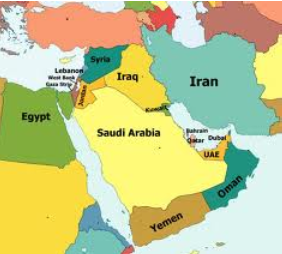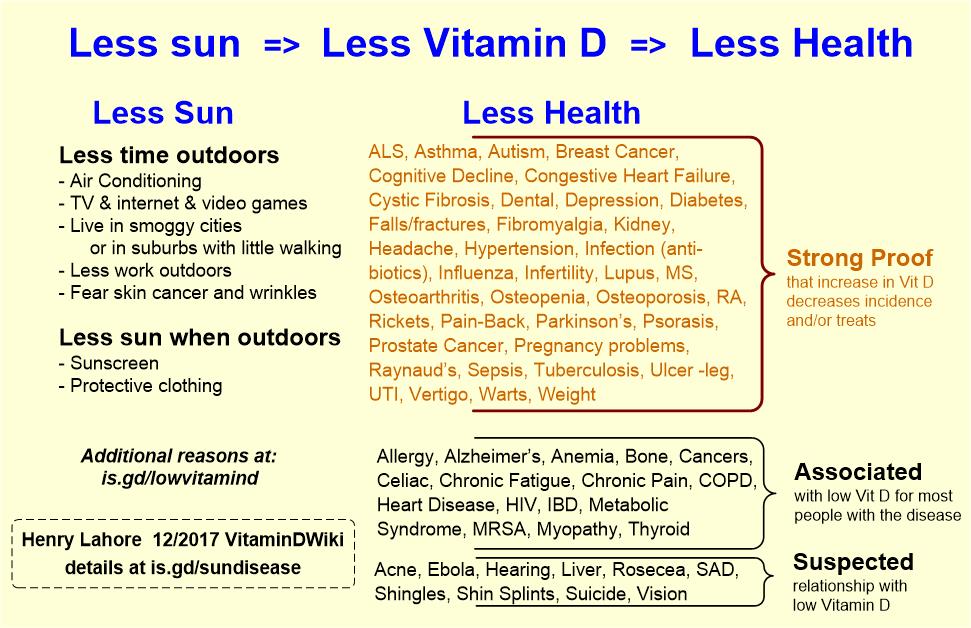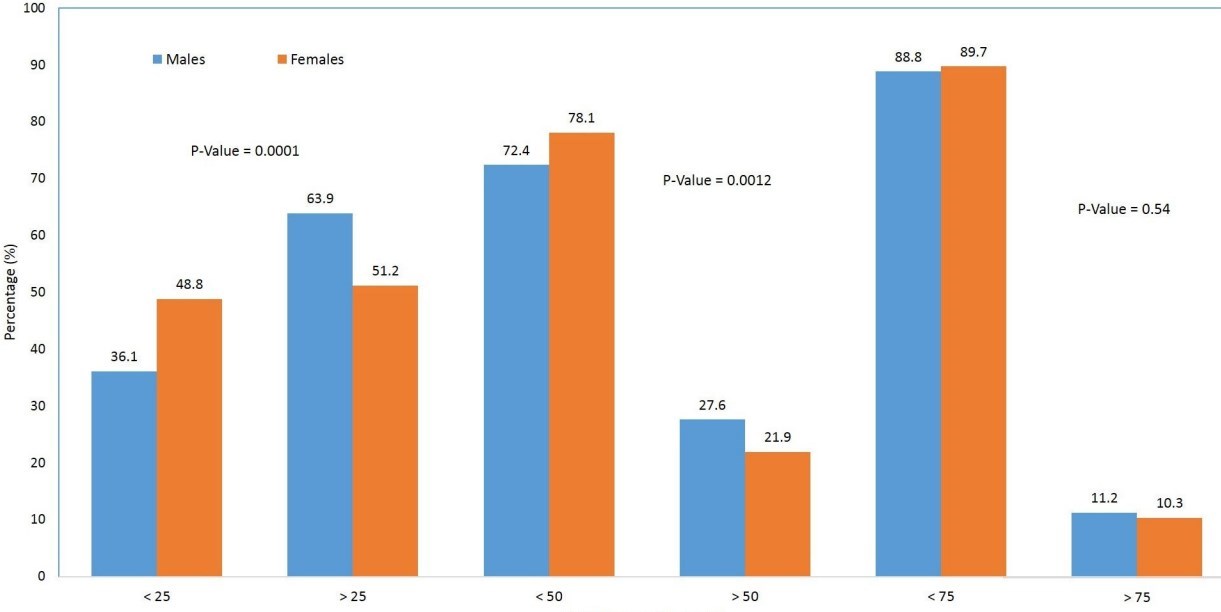Overview Middle East and vitamin D
See also: Middle East in Vitamin D Life items
The, ahem, ‘Joy’ of Summer in Dubai
Written by thehedonista (2011)
Upon awakening this morning, I could not see out my windows. Lion asked me if it had been raining – the condensation was thick and punctuated with large rivulets that revealed the jungle our garden has become. But if I look out the windows on the second storey, I can see nothing but beige. The light is dull, the sun shrouded in mother earth’s pollution – dust and humidity.
The streets are silent, but for a man in orange sweeping the curb and a gardener in grubby shalwar qameez dragging a rusty lawn mower behind his bike. The joggers and dog walkers are nowhere to be seen. Even bus children wait in the air conditioned zone on their front doorsteps until the last moment when the school bus toots. Outside has become the wild frontier – only the strong, mad or unfortunate will brave it.
My day revolves around thirty second walks between my car and cooled venues I leave early and ensure I arrive in time to secure a good carpark at my destination. Others flout the rules and double park wherever they please, knowing the parking ticket is worth it to avoid the long walk in the heat. Not that there are many parking inspectors on the job anyway.
On the radio, the news reader reminds us to check our tyres for tread and inflation. Bitumen can get to 70ºC on days like this, hot enough to cause a second degree burn in 1 second , and of course cause tyre blowouts. I am also careful not to leave my purse in the car when I lock it – not because of theft, which is a rare occurence here, but because my credit cards could melt **.
Today I brave Karama. The folks back home want a collection of good cheap knock-offs. Even the polo shirts hanging outside on racks are hot to the touch. Inside they have the AC set to max. A haze of humidity gathers at the door where the temperatures clash, and no matter which way you are walking, you end up damp on the other side. My handbag man gives me a cuddle upon sealing the deal, and he recoils in soggy horror after accidentally touching my sweaty shirt-back.
At pick-up, all the parents run from car to school foyer, where we wait illegally till the last moment. We have been instructed not to clutter the public areas, but the thought of waiting outside is sickening. Small talk with other mothers has all but ceased. Our sedentary indoor lifestyle provides little in the way of news and anecdotes. Besides, the heat makes us tired.
Everyone is tired.* We get no sunshine and are all vitamin D deficient . We are lethargic, moody, and our viruses keep circulating in the perpetual air-conditioning, so we are all sick. There are those who work outside, and they are sicker, with heatstroke, never-ending headaches, urinary tract infections, high blood pressure, and other effects of extreme heat and dehydration . Heat-related deaths are not unheard of. Outdoor labour is banned between the hours of 12:30 and 3:30 *, but this is often ignored. I see them in their blue overalls, wet from the shoulders to the waist, faces stained with dust and salt. They wrap scarves on their heads in meager protection – I wonder if it actually makes them hotter. At the traffic lights, from my air conditioned car, I see them peering through my windows, and I wonder how they can keep the malice from their tired stares. After all, I may not be their boss, but my life in Dubai supports this employment and everything that comes with it.
Sometimes they even smile, and it makes me want to cry.* At home , I put on a new DVD for the kids, and we break the Lego construction from yesterday so we can start again. We play foozball, UNO, build cubby houses with chairs and blankets. I bake, and blog, and then blog about baking, and eventually, in our boredom we slump on the couch and eat cupcakes. On the weekend we go to malls *. We shop, walk, ski, skate, abseil, play pinball, take rollercoaster rides, and terrify tots in playcentres, all in malls. We eat in the malls. We buy things we don’t need. We stop for coffee we don’t want. It’s all expensive, and every moment we look forward to the day we can get back in our pool. For it remains in the central yard of our compound, a tempting yet deceitful cool blue colour, but hotter than a bath.
This week we have visitors – friends of my parents. We were supposed to go out Tuesday, but Margot was struck down by the suffocating air and spent the first 36 hours doubling and tripling her asthma medication so she could breathe.
Middle East: map and 2020 population


population from Wikipedia
List of reasons for vitamin D deficiency: with Middle East annotations* ME = especially in the Middle East * Less time in the SUN *1. Air conditioning - to avoid the hot sun ME *1. Increased use of multi-media indoors
More indoor jobs - more office workers, fewer farmers* ME 1. Living in cities more ME 1. Want whiter skin - especially women ME *1. Fear skin cancer
Cholesterol reduced
More Obesity
Soft drink cola
Meat from factory farms
Some drugs consume or block vitamin D
increased use of polyunsaturated fats
More windows which appear to destroy vitamin D
* Other than sun *
Eat less liver - which used to have very large amounts of vitamin D* ME ** Unsure how the meat was killed
Less Magnesium in foods
More Seniors
Excessive clothing (burka)* ME ** Note: Women in ME have much less vitamin D than men
Have a condition which Consumes vitamin D
Have a condition which Prevents Adsorption in the gut
Have a condition which Prevents Conversion to active form
Have a condition which requires more vitamin D
Lactose Intolerance or Vegan
Health reasons to avoid sun
Work long hours or night shift
Live far from equator (Only if move there)
DDT in bodies reduce the vitamin D
Myths about vitamin D
Dark Skin* ME 1. Use vitamin D2 avoiding D3 from wool and gelatin typically made from animals ME ** Note: D2 is known to have less benefit than D3, and it may actually DECREASE D3 levels
Note: As of 2012 many companies make Kosher/Vegan Vitamin D3
Note: Vegi-caps do exist
Lack vitamin D fortification of food and drinks* ME ** Details on above list are HERE
Desalinated water (lacking Magnesium ) - unique to Saudi Arabia (60%)
See also Vitamin D Life
20+ studies with IRAN in the title
- includes Iranian trials finding that vitamin D cost-effectively treats many diseases
Need 1 hour of noon sun to get Hijab women to 20 ng of Vitamin D (cloth) – June 2019
International Symposium on Vitamin D Deficiency - Abu Dhabi March 2012 and 2013
Vitamin D deficiency in Middle East and North Africa - June 2013
High Prevalence of Vitamin D Insufficiency in Athletes and Dancers in Israel
[https://www.Vitamin D Life.com/tiki-index.php?page_id=741|Arab pre-term infants often have less than* 10 ng *of vitamin D - 2010] also a very sunny climate
[https://www.Vitamin D Life.com/tiki-index.php?page_id=259|Doubling of people less than* 30 ng *of vitamin D - 75% of whites and 90% of blacks – Feb 2010]
Even in Sunny Areas, Vitamin D Intake Often Too Low - May 2010
[https://www.Vitamin D Life.com/tiki-index.php?page_id=611|Less than* 4 ng *is more common in Saudis than diabetic Saudis – July 2010]
Parkinson disease increased in Israel by 50 % in 7 years – June 2011
[https://www.Vitamin D Life.com/tiki-index.php?page_id=1448|Red Alert – one in three pre-teens in Tehran had less than* 5 ng *of vitamin D – Feb 2011]
[https://www.Vitamin D Life.com/tiki-index.php?page_id=1782|Iranian vitamin D levels* 13 ng *summer, 12 ng winter – June 2011]
[https://www.Vitamin D Life.com/tiki-index.php?page_id=1898|Jordanian women vitamin D –* 16 ng *if Western Dress – 12 ng otherwise – Aug 2011]
Osteoporosis increasing and vitamin D decreasing in Middle East - Oct 2011
Excessive clothes and being indoors results in very low vitamin D levels – Nov 2011
Avoid the hot sun and thus vitamin D in the Middle East – Oct 2011
[https://www.Vitamin D Life.com/tiki-index.php?page_id=2484|70 % of Saudi women* <10 ng *, but only 40 % of men – March 2012]
People in Louisiana may be avoiding the hot sun like those in Middle East – May 2012 similar result
Vitamin D levels in the Middle East: very low, especially in summer – June 2012
Middle East women have low vitamin D levels, almost independent of dress style – Dec 2012
Hypovitaminosis D in the Middle East and North Africa - May 2013
More hijab clothing may have resulted in 6X increase in Multiple Sclerosis in Tehran – May 2013
See Also Vitamin D Life -* Air conditioning [https://www.Vitamin D Life.com/tiki-index.php?page_id=339|Diabetes rising quickly in areas with recent Air conditioning **– June 2011]
[https://www.Vitamin D Life.com/tiki-index.php?page_id=81|* Air conditioning *probably has decreased vitamin D] from a book
[https://www.Vitamin D Life.com/tiki-index.php?page_id=1547|Hypothesis – China* Air conditioning *disease is the result of less vitamin D – March 2011]
has the following chart -* Air conditioning *

See also web
Epidemiology and timing of seasonal influenza epidemics in the Asia-Pacific region, 2010–2017: implications for influenza vaccination programs - 2019
Influenza occurs in many countries in the SUMMER
air conditioning allows people to totally avoid the hot, hot (vitamin D giving) sun

Medical Conference in Dubai Jan 2012 will discuss vitamin D deficiency in UAE 70,000 participants
78 per cent of the UAE population suffer from Vitamin D deficiency
the highest incidence of osteoporosis in the world, due to
limited sun exposure due to local cultural practices, the high outdoor temperatures, conservative clothing, urbanization, darker skin pigmentation, smoking, obesity, diet and prolonged breast feeding without supplements, high caffeine and carbonated consumption, as well as a lack of vitamin D fortification in common foods.
Private Sun a 2012 Palestinian film about the hard time of getting vitamin D from the sun
Synopsis: Mariam is instructed by her doctor to sunbathe in order to reverse the vitamin D deficiency that is causing her a bone illness.
But with nosy neighbors, an overbearing sister-in-law and Israeli surveillance planes, private moments under the sun are precious and rare.
Smithsonian Magazine May 2013
Multiple sclerosis up 7X in Tehran,1989 - 2005.
In Iran’s central province of Isfahan Multiple sclerosis up 3X 2005 - 2009.
Women in Pakistan want light skin so much that they use skin bleaching cream Global Post, May 2013
Arthritis at 30: price of an unfit lifestyle The National, UAE, Aug 2013
- Up to 70 per cent of sufferers in UAE are in their thirties: Arthritis due to obesity, lack of exercise, and low vitamin D
- 99.2% of population < 30 ng, 61% < 10 ng, serum level of women not change with season,
Depression highest in Dubai in the HOT summer March 2014
- When they totally avoid the sun

Islamic State fanatics put up billboards ordering women to wear the burka...or else July 2015
* ISIS harms women's health as much as some Middle East countries * In ISIS-Controlled Territories, Forcing Women to Cover Up Has Deep Psychological Effects Nov 2015
Health Effects of Islamic Dress From WikiIslam, the online resource on Islam - 2017
"There is concern among the medical community about some of the health effects of the extreme styles of Islamic dress, with the main issues arising from Vitamin D deficiency due to lack skin exposed to UV light. It has been established by credible scientific evidence that almost all women who observe the full hijab are chronically deficient in Vitamin D.[2] Vitamin D is a vital nutrient and deficiency of this kind can lead to various diseases."
"The concern is not only towards the woman who chooses to observe the more covering forms of Islamic dress but also towards any potenial children she may carry. Infants born to vitamin D deficient mothers have been found to suffer from an increased prevalence of seizures."
"Due to this reason, serious vitamin D deficiency is wide-spread in many Muslim majority countries. A study performed by doctors at King Fahd University Hospital in Saudi Arabia, showed that out of all 52 women tested,* all *had seriously deficient levels of Vitamin D and were at risk of many serious health problems, despite living in one of the sunniest places on the planet"
"According to The Economist magazine’s world rankings, the countries with the highest obesity rates among women are Muslim countries" (* 8 of the top 10 *)
Wikipedia Nov 2013

89% in Riyadh, Saudi Arabia have <30 ng of Vitamin D

{FONT(size="20")}* 📄 Download the PDF from Vitamin D Life {FONT} Deficiencies under plenty of sun: Vitamin D status among adults in the kingdom of Saudi Arabia, 2013 - Oct 2015 *Noth American Journal of Medical Science 2015 | Volume : 7 | Issue : 10 | Page : 467-475, DOI: 10.4103/1947-2714.168675
Marwa Tuffaha1, Charbel El Bcheraoui1, Farah Daoud1, Hessah Abdulla Al Hussaini2, Fahad Alamri2, Mohammad Al Saeedi2, Mohammed Basulaiman2, Ziad A Memish2, Mohammad A AlMazroa2, Abdullah A Al Rabeeah2, Ali H Mokdad1
1 Institute for Health Metrics and Evaluation, University of Washington, Seattle, Washington, USA
2 Ministry of Health of the Kingdom of Saudi Arabia, Riyadh, Saudi Arabia* 📄 Download the PDF from Vitamin D Life *Background: Vitamin D deficiency has been correlated with several diseases and injuries including diabetes, osteoporosis, fractures, and falls. In the Kingdom of Saudi Arabia (KSA), current data on vitamin D status are lacking. Aims: To inform Saudi public health authorities on the current status of blood levels vitamin D deficiency, we analyzed data from the Saudi Health Interview Survey.
Materials and Methods: The Saudi Health Interview Survey (SHIS) is a cross-sectional national multistage survey of individuals aged 15 years and above on sociodemographic characteristics, tobacco consumption, diet, physical activity, health care utilization, different health-related behaviors, and self-reported chronic conditions. A total of* 10,735 participants *completed a health questionnaire and were invited to the local health clinics for biomedical exams.
Results: 62.65% of female Saudis and 40.6% of male Saudis aged 15 years and above are deficient in vitamin D. Out of them, less than 1% males and less than 2% females consume vitamin D supplements. Women who have never married and obese individuals are more likely to be deficient in vitamin D, compared to men who were currently married and nonobese individuals. Those consuming vitamin D supplements are less likely to be deficient in vitamin D.
Conclusions: Our study showed a high prevalence of vitamin D deficiency among Saudi men and women, and the results call for an increased awareness to ensure adequate levels of vitamin D for better health in Saudi Arabia. Moreover, our findings are certainly relevant for other countries in the Gulf region or countries with similar cultures, clothing, and religions.
Only 2% of UAE have Vitamin D >30 ng - 2016
The status of serum vitamin D in the population of the United Arab Emirates Dec 2016* A portion of abstract *We explored serum vitamin D level in a large sample (7924) of patients who were given a blood test to check their vitamin D status on their first consultation at a day surgery hospital in Dubai. The overall mean level of 25(OH) D was ~ 20 ng/mL Deficiency was found among all age groups, in both sexes and in both local and non-local populations: overall
85.4% were vitamin D deficient,
12.5% showed insufficient serum vitamin D level, and only
2.1% had an appropriate level** Short URL for this page = http://is.gd/vitadME__
